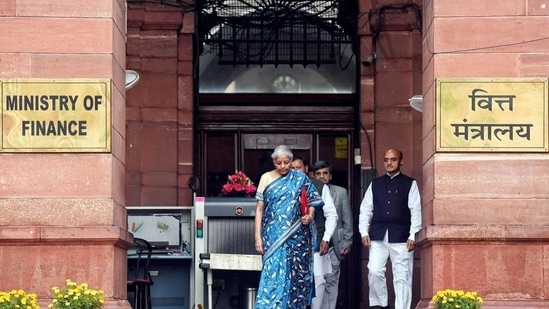Jul 22, 2024 01:07 PM IST
The growth estimated by the Economic Survey, ahead of the Union Budget, is in line with the International Monetary Fund’s estimate.
Union Finance minister Nirmala Sitharaman tabled the Economic Survey 2023-2024 in the Lok Sabha. The survey noted that India’s real GDP is expected to grow between 6.5 and 7 per cent in 2024-25. The growth estimated by the Economic Survey, ahead of the Union Budget, is in line with the International Monetary Fund’s estimate of 7 per cent.
The survey said, “The survey conservatively projects a real GDP growth of 6.5–7 per cent, with risks evenly balanced, cognizant of the fact that the market expectations are on the higher side.”
What Economic Survey said on inflation
Economic Survey noted that core inflation remained sticky on account of services inflation and a strong labour market, especially in most Asian Economies.
Also Read: Economic Survey out ahead of Budget: What it says on GDP, inflation and more
Economic Survey on retail inflation: Declined to 5.4 per cent in FY24
The Economic Survey said that “inflationary pressures stoked by global troubles, supply chain disruptions, and vagaries of monsoons have been deftly managed by administrative and monetary policy responses. After averaging 6.7 per cent in FY23, retail inflation declined to 5.4 per cent in FY24.”
Also Read: Union Budget 2024: 6 new changes to income tax that the new budget may bring
Economic Survey on government’s push towards capital expenditure
The Economic Survey said that the “government’s thrust on capex and sustained momentum in private investment has boosted capital formation growth. Gross Fixed Capital Formation increased by 9 per cent in real terms in 2023-24.”
Also Read: Union Budget 2024: How will the stock market react to capital gains tax changes?
What Economic Survey said on Indian economy?
The Economic Survey states, “India’s calibrated response to the pandemic on the economic front included three salient components. The first has been the focus on public spending on infrastructure, which kept the economy afloat by creating a strong demand for jobs and industrial output and triggered a lagged yet vigorous private investment response. Stronger balance sheets of the financial and non-financial private sector helped, aided by a decade of supporting initiatives by the Government and the Reserve Bank of India. The second has been partly a natural response of business enterprise and public administration amidst adversities.”
